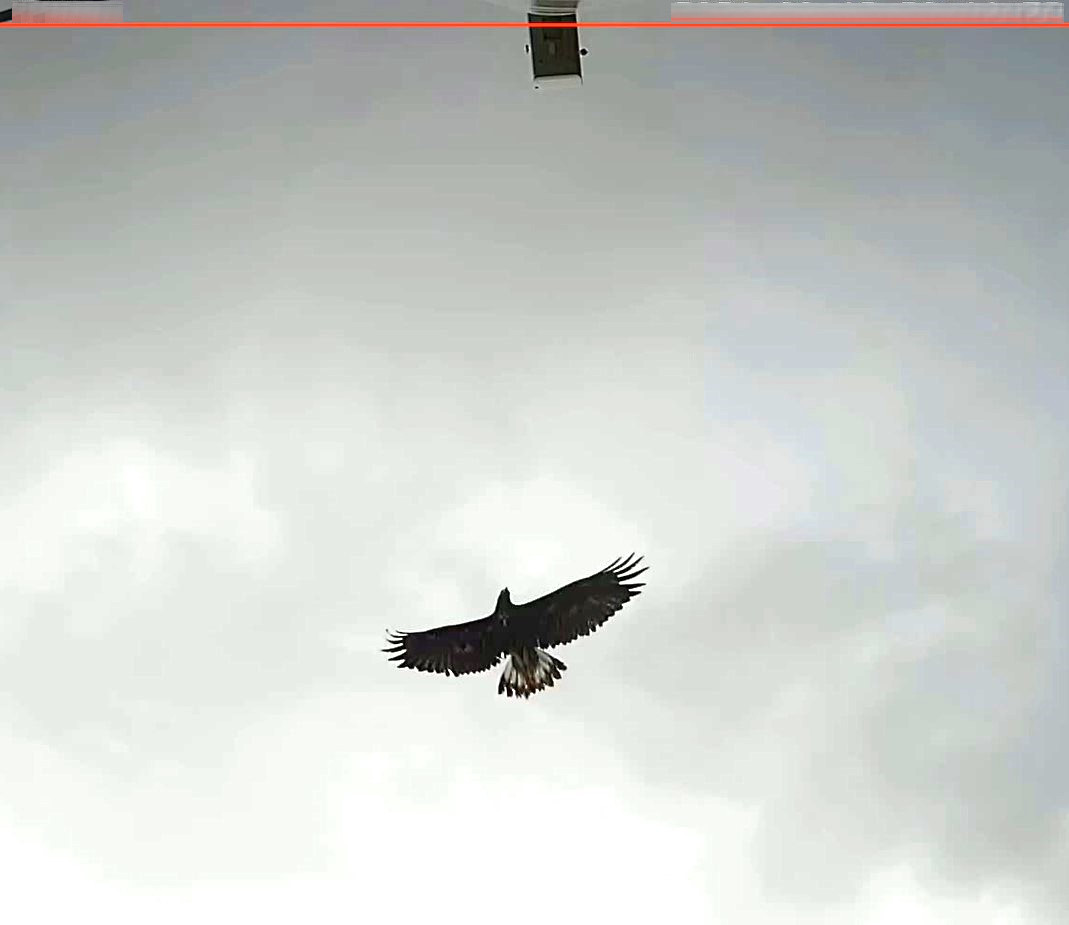To kick off the new year in 2024, we’ve chosen to share images of magnificent specimens that we strive to safeguard every day. One of our SafeWind systems, equipped with high-definition cameras and installed on a wind turbine in France, was able to observe a Golden Eagle (Aquila chrysaetos).
This majestic and emblematic bird of prey belongs to the Accipitridae family. It is distinguished by its impressive wingspan, often reaching 2.3 meters, and a weight that can exceed 6 kg. The golden plumage on its head and neck contrasts with the dark brown of its back and wings. Young eagles often exhibit lighter plumage that evolves with age.
This species has a global distribution, spanning North America, Eurasia, North Africa, and the mountainous regions of the Himalayas. Its habitat ranges from plains to rugged mountains, showcasing remarkable adaptability to diverse environments.
Golden Eagles typically construct their massive nests, called eyries, on steep cliffs. The nests are usually situated at altitudes lower than their hunting grounds, allowing them to glide back with larger prey. These nests are reused year after year and can reach considerable dimensions.
Despite being a symbol of power and freedom, Golden Eagle populations have faced threats such as habitat loss, accidental poisoning from pesticides, and illegal hunting. Conservation efforts, including protecting nesting areas and raising public awareness, are crucial to preserving this iconic species.
It holds a significant place in various cultures throughout history, often associated with nobility and power. It serves as the national symbol for several countries, including the United States and Germany.
